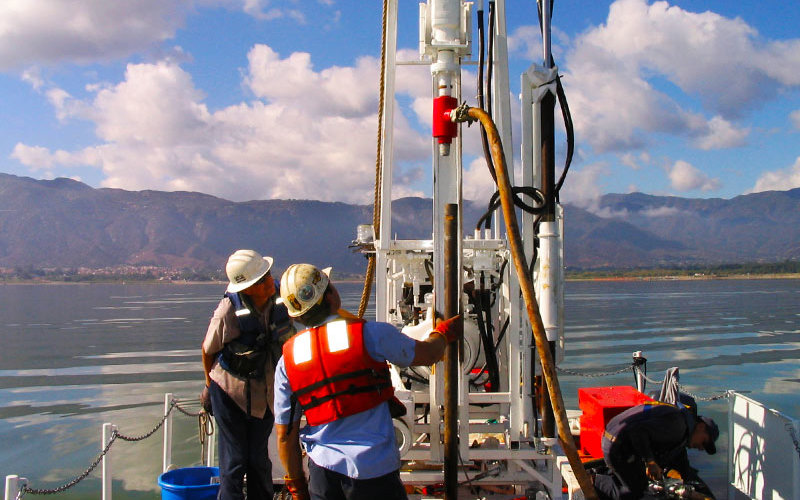
With record rainfall this winter, floods represent a major natural threat to Southern California now, in the future — and even the past.
A new study by Cal State Fullerton paleoclimatologist Matthew E. Kirby found evidence of major flooding 4,800 years ago in the Lake Elsinore area of Riverside County, a region where population growth is rapid.
“Floods are a natural part of California’s history. The past is the key to the future,” said Kirby, professor of geological sciences.
“Where the most extensive flooding occurred recently at Lake Elsinore is exactly the location and source we identified and associated with the large flood we found in Lake Elsinore sediment from thousands of years ago,” he added. “Population growth at Lake Elsinore has developed in a high flood risk location near McVicker and Leach canyons.”
A better understanding of how often large, catastrophic floods occur, especially in populated and rapidly growing communities such as Lake Elsinore, is important for flood management and planning, noted Kirby, who studies past climates, including drought history.
“However, human development in flood risk areas and their modification of the natural climate system make the risk and prediction of flood hazards more challenging in the future.”
Kirby’s latest study on “Evidence for a Large Holocene Flood Event in the Pacific Southwestern United States (Lake Elsinore, California)” has been published as part of the Geological Society of America’s special volume and is available online.
Kirby is lead author of the scientific paper, with his former student Luissa (Ivanovici) Johnston ’08 ’10 (B.S., M.S. geology); Darren Sandquist, CSUF professor of biological science; William P. Patterson of the University of Saskatchewan in Canada; and Katherine C. Glover of the University of Maine, all co-authors. Sandquist analyzed vegetation found in lake sediment samples. The National Science Foundation, Lake Elsinore-San Jacinto Water Authority and the Elsinore Valley Municipal Water District funded the project.
The research project began nearly a decade ago with the collection of sediment cores that record thousands of years of history from the bottom of Lake Elsinore, a freshwater lake with runoff from the San Jacinto River.
The sediment of clayey and sandy silt reveals data that tells a story spanning thousands of years about the region’s climate, and also can be correlated to data compiled by other scientists in different regions to infer past climates, relayed Johnston, who worked on the research for her undergraduate thesis project. In the lab, Johnston analyzed changes in the size of sediment grains from the lake sediment samples.
“It makes me feel like I did something that mattered,” said Johnston of her research experience at CSUF and now as a co-author of her first published paper.
Her thesis work with Kirby inspired her to earn a master’s degree, and she is considering pursuing a doctorate to become a research scientist.
“I studied geology to discover and explore,” Johnston said. “As a student, I gained a lot of different kinds of experience from doing a research project from start to finish. Now that my work has become significant as part of this new research paper, it is gratifying.”
With the Lake Elsinore sediment cores likely containing evidence for other similar large flood events in the region over the past 10,000 years, Kirby’s latest research is only “the tip of the iceberg.”
“Further research is required to complete the flood history for Lake Elsinore, and Southern California in general, to assess their frequency, magnitude and timing,” he said.